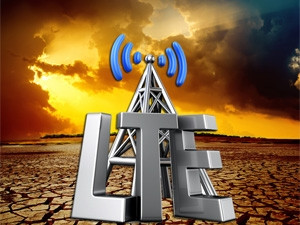
As of Monday, South Africans will be able to get their hands on an LTE-enabled smartphone for just under R1 500.
This is a first for the mobile community and a move, analysts say, towards the mobile technology becoming the norm, rather than the exception.
SA's largest mobile operator by subscribers, Vodacom, yesterday announced the imminent arrival of its first low-cost device featuring LTE capability. The own-branded Smart 4 Turbo - a 4.5-inch Android (KitKat 4.4) smartphone - continues in the vein of the Smart Kicka and Smart Tab 3G, both launched last year.
The important difference, says Vodacom, is the move to include next-generation, high-speed mobile tech. "LTE is becoming increasingly important as a connection technology for us. It's not just about the higher speeds; LTE is also a more efficient technology that means we can squeeze additional capacity out of a given chunk of spectrum. On top of that, we're able to use LTE to offload traffic from 3G, so it also helps improve the experience of non-LTE users."
Meanwhile, Vodacom rival MTN plans to launch a low-cost LTE device of its own, also a first. Chief marketing officer Larry Annetts says the operator has invested substantially in its Steppa range of low-cost smartphones and tablets, and has recently completed testing a low-cost LTE Steppa device, set to be launched "soon".
Annetts says the migration to new-generation networks such as LTE has been a natural transition. "Technology is continually advancing and LTE is a new-generation technology that allows for faster download and upload speeds."
BMI-TechKnowledge director Brian Neilson says the news of a move towards low-cost LTE devices comes with some fanfare, indicating LTE is a selling feature for a wider range of consumers.
Gaining steam
While LTE officially got off the ground in October 2012, the range of devices that were enabled for the technology was limited. Nowadays, high-end smartphones come standard with LTE, but the lower-cost devices generally still only offer 3G.
Ovum analyst Richard Hurst says the evolution of LTE is such that it is gaining in terms of rollout and coverage - and therefore also in importance for device manufacturers to be able to provide devices that will use the technology.
Hurst notes LTE coverage in SA is currently limited to the urban metropolitan areas - although this does not imply there will be no uptake of low-cost LTE devices. "Lower socio-economic brackets are likely to be just as enthusiastic in terms of LTE services as others."
Neilson points out that low-cost devices often go hand-in-hand with lower data usage, for affordability reasons, so a user could chew through 100MB in a few minutes, if not seconds. "However, there is logic in low-cost LTE devices, in that operators have re-farmed some of their 3G/HSPA [high-speed packet access] spectrum for LTE and need to ensure the LTE network is loaded - if only to free up the 3G/HSPA network for voice and for non-LTE data users."
ICT expert Adrian Schofield, who believes LTE is on its way to becoming a pervasive smartphone standard, says as more of the networks become LTE-enabled, it makes sense for operators to extend the range of devices that are LTE-capable.
"The higher speeds will enable the data traffic to be delivered in less time so that more users can be accommodated. The lower cost of the device itself means more of the revenue is directed to usage."
In essence, says Hurst, all future mobile devices should eventually include LTE capability -although there is still ample opportunity around 3G and HSPA platforms.
Neilson notes that, from a manufacturing perspective, the trend has been to build all radios (2G, 3G, HSPA) into the transceiver in the device, and over time the cost of doing so becomes more marginal. "That would now extend to including LTE as well."
The cost factor
Vodacom says the inclusion of LTE in devices, overall, has a "noticeable impact" on the cost of the device. There are two key cost factors, the operator explains: "The first is on the hardware side. An LTE-capable device needs additional processing power, memory and radio-frequency equipment (LTE antennae).
"The second issue is the cost of intellectual property rights (in effect licensing fees) that we need to pay to use the technology."
MTN says the inclusion of LTE capability "doesn't really make up a big part of the cost but in certain designs, it can make up a big part of the design".
Annetts says the operator expects to see a significant decrease in component costs with the "mass adoption of LTE across the world".
All of SA's mobile operators, apart from Cell C, have a commercial LTE offering and are looking at expanding their LTE footprint in the near future. Vodacom currently has the most LTE base stations (around 2 000), with Telkom in second place (around 1 300), and MTN not far behind, with at least 1 000 sites.
Share